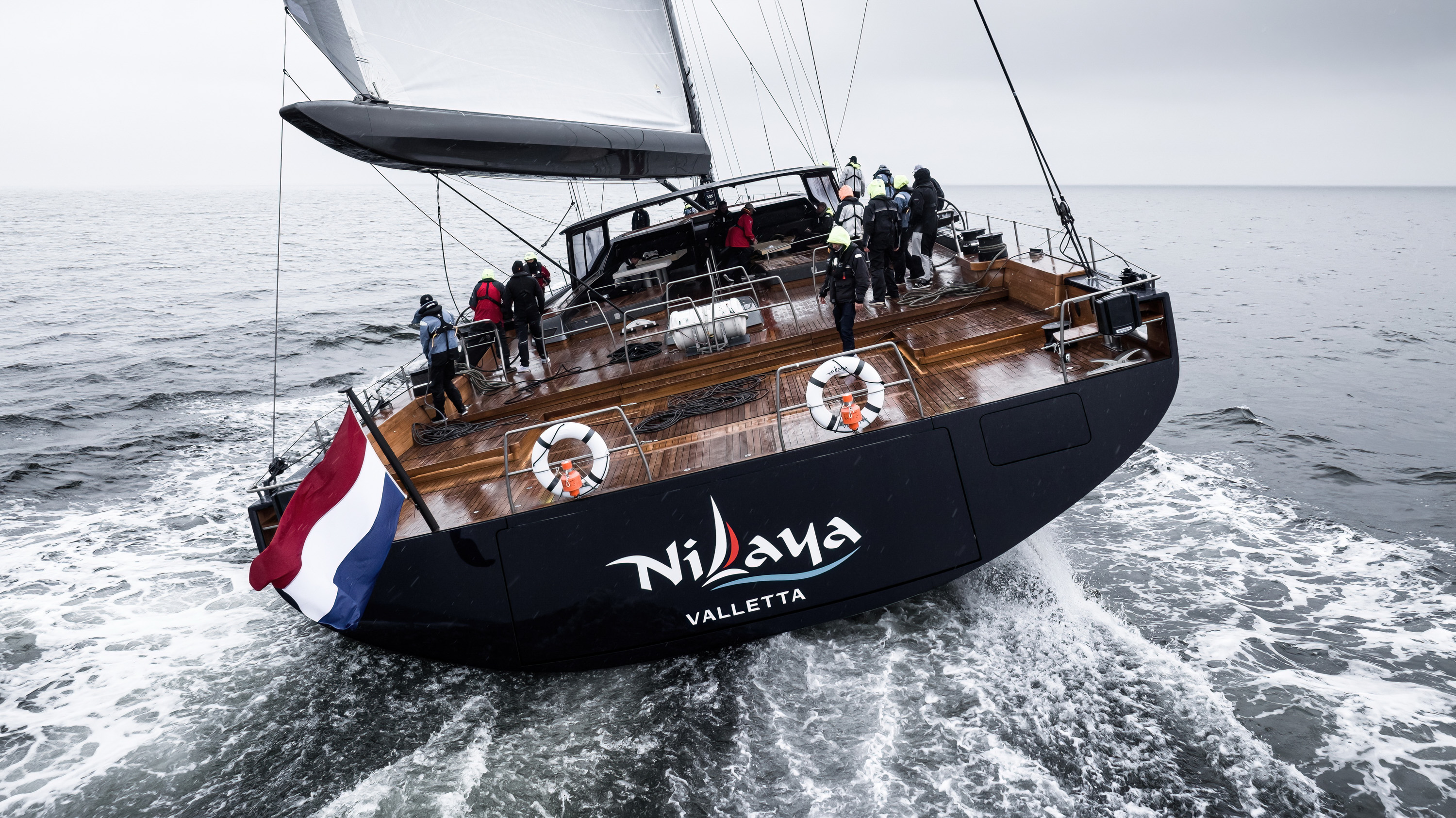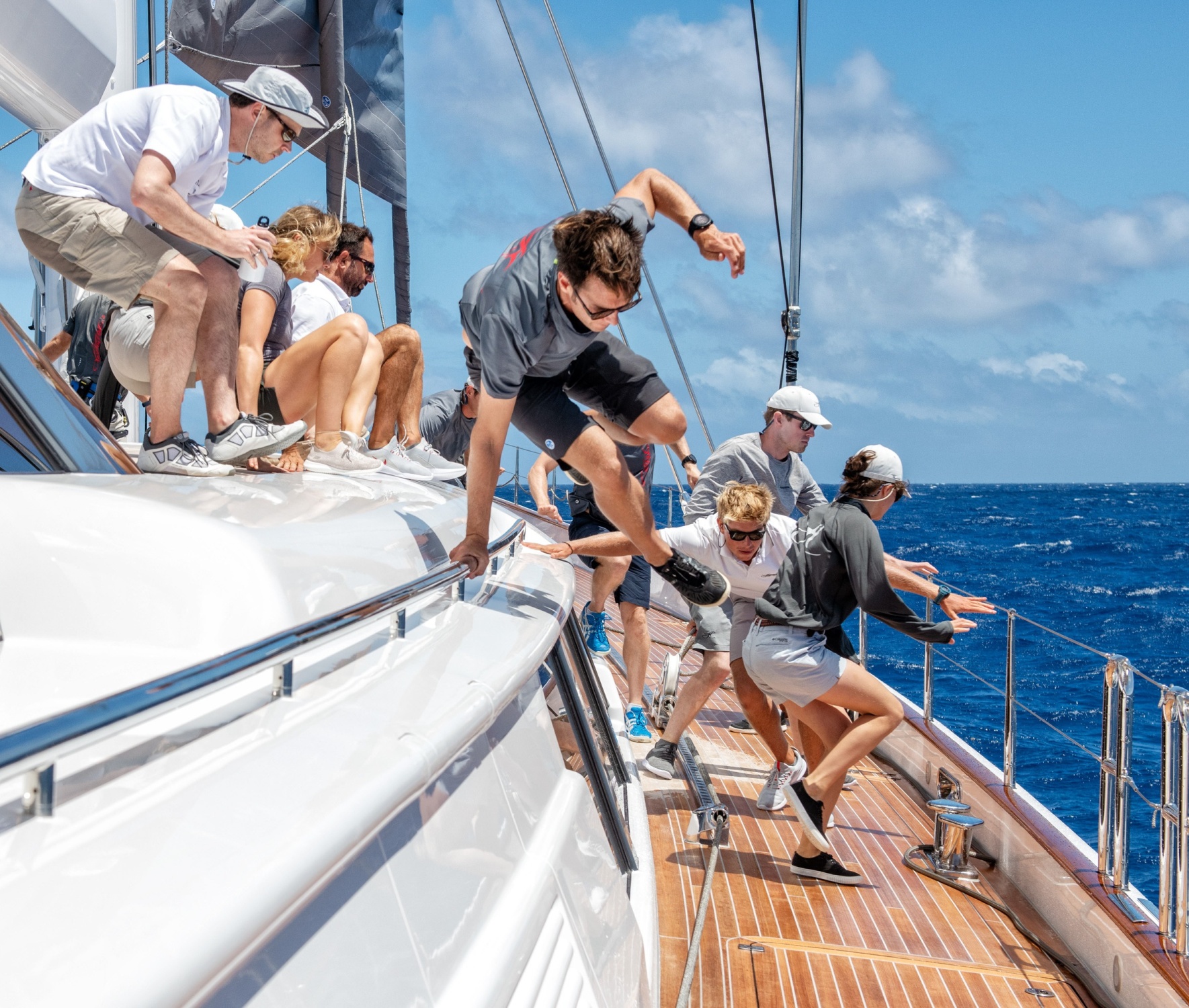If you have ever seen the famous cartoon of how a child's swing looks like when designed by a committee, you will immediately understand the idea driving Rondal's Integrated Sailing System.
ALWAYS A CHALLENGE
FOR THE SHIPYARD
Traditionally, most of a superyacht’s multitude of sailing components were ordered from component specialists: spar manufacturers, rigging suppliers, sailmakers, winch makers, deck hardware makers, hydraulics, electric motors, ropes, load sensors, alarms, controls, and PLCs. The responsibility of making them work in concert to achieve a desired result was always a challenge for the shipyard, which has ultimate responsibility for delivering the yacht. Imagine what can go wrong with the specifications being read and interpreted by so many people – some at a great distance from the naval architect or the owner!
On a sailing yacht, each one of these elements is critical, yet even more critical is the disappointment of the owner when
his mainsail won’t flatten for upwind work because the mast and rigging suppliers didn’t discuss prebend with the sailmaker. Then, too, the yard’s PLC programmer didn’t anticipate the need for “race mode” because they never spoke with the owner’s crew.

"WE DON'T JUST SUPPLY A RONDAL PRODUCT, WE DEVELOP THE ENTIRE OPERATION"
As Bart van der Meer (Proposal Engineer at Rondal) explains, “We are taking a new approach in that we don’t just supply a Rondal product, we develop the entire operation called Integrated Sailing System. It’s a team approach with the naval architect and the client with meeting their expectations for the yacht’s performance as the goal and to provide a better human/machine interface. We want to design it so the boat won’t damage itself because the operator made a minor mistake leading to one system overriding the others. The goal of the Integrated Sailing System is to provide the operator with the relevant info and controls to regain the feeling of being in control, even while racing these megayachts through Sardinia's Bomb Alley”.
Because every component manufacturer fears being the cause of failure, the default position when building maxis or superyachts is to deliver something just a bit more robust than the naval architect’s specs solicited. A “beefed up” block here and a more robust winch there, and the boat is suddenly hundreds of pounds heavier, perhaps affecting its trim and balance and compromising interior space. The same goes for the suppliers. If left to develop it’s own specification, a hydraulics supplier will select a robust product for the length and predicted loads of the vessel while cruising offshore. That’s a safe choice, but the size of valve and stroke of the ram has a great deal to do with the operational profile. The industry default position is that the equipment with the highest needs will come to a complete stop if there is a loss of or drop in hydraulic pressure, said a Rondal spokesman. “Everything may work smoothly when loaded to 30 percent, but not if all the joysticks are pushed full-on during a tack”, he added. Most computer programmers are not sailors, but the team at Rondal all has offshore experience, and knows the importance of developing the system protocols with the owner’s team and crew.
Of course, there is an additional issue when programmers put different system information on different tabs, or pages. Trying to flip between vang load, mainsheet winch, and shroud sensors is at least slow and inconvenient, and at worst the precursor to something that can ruin your day! “Even if you can find all the information, there comes a point at which the size of the boat means that a human being can’t be making calculations and decisions fast enough”, says Van der Meer.
FIRST STEP: DEVELOPING THE OPERATIONAL PROFILE
The Integrated Sailing System first develops the operational profile with the captain and the owner, or the owner’s rep, and all the critical information for simultaneous gear operation is located on one page. The crew can easily isolate specific gear and functions, but for speed and safety, all the real-time data necessary is available in one view. Combining all the functions of Integrated Sailing System together, including the pre-build development of specifications with the designers, sailmaker and owner’s team, is a bold approach, but one that is logical and removes a certain amount of risk taking for the builder.
But it is not just performance sailing yachts that can be beneficiaries of the Integrated Sailing System approach, he explained. “Integrated Sailing System is forward looking and is also perfect for wind-assisted motor yachts, motor sailers or even WASP commercial ships where you can’t expect the crew or the builder to be savvy about sailing. Integrated Sailing System can provide a speed and heading while sails are being raised or a hard wingsail is being deployed and then suggest headings and trim for best efficiency on a desired course. We hope this can help expand the sail-assisted market,” says Van der Meer.
Read more captivating stories in our Rondal Insights.





.jpg&resolution=772x482&quality=100)
